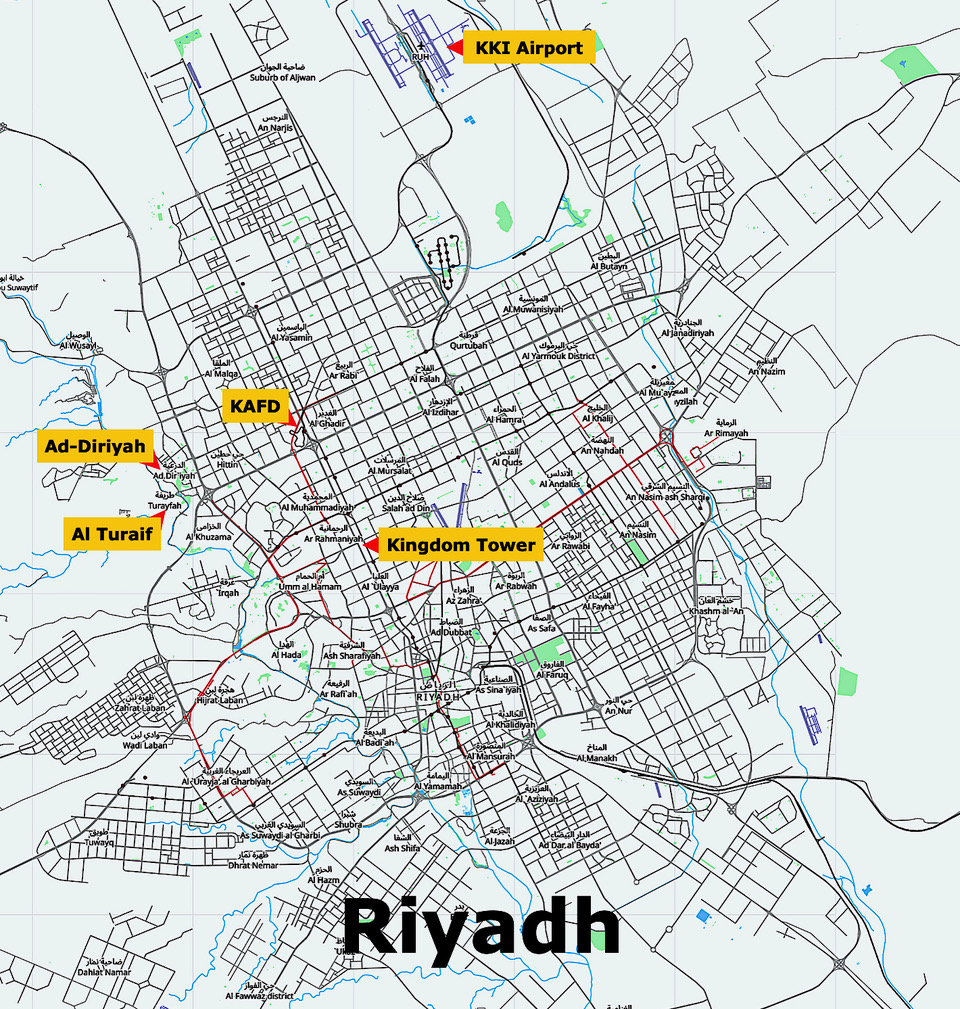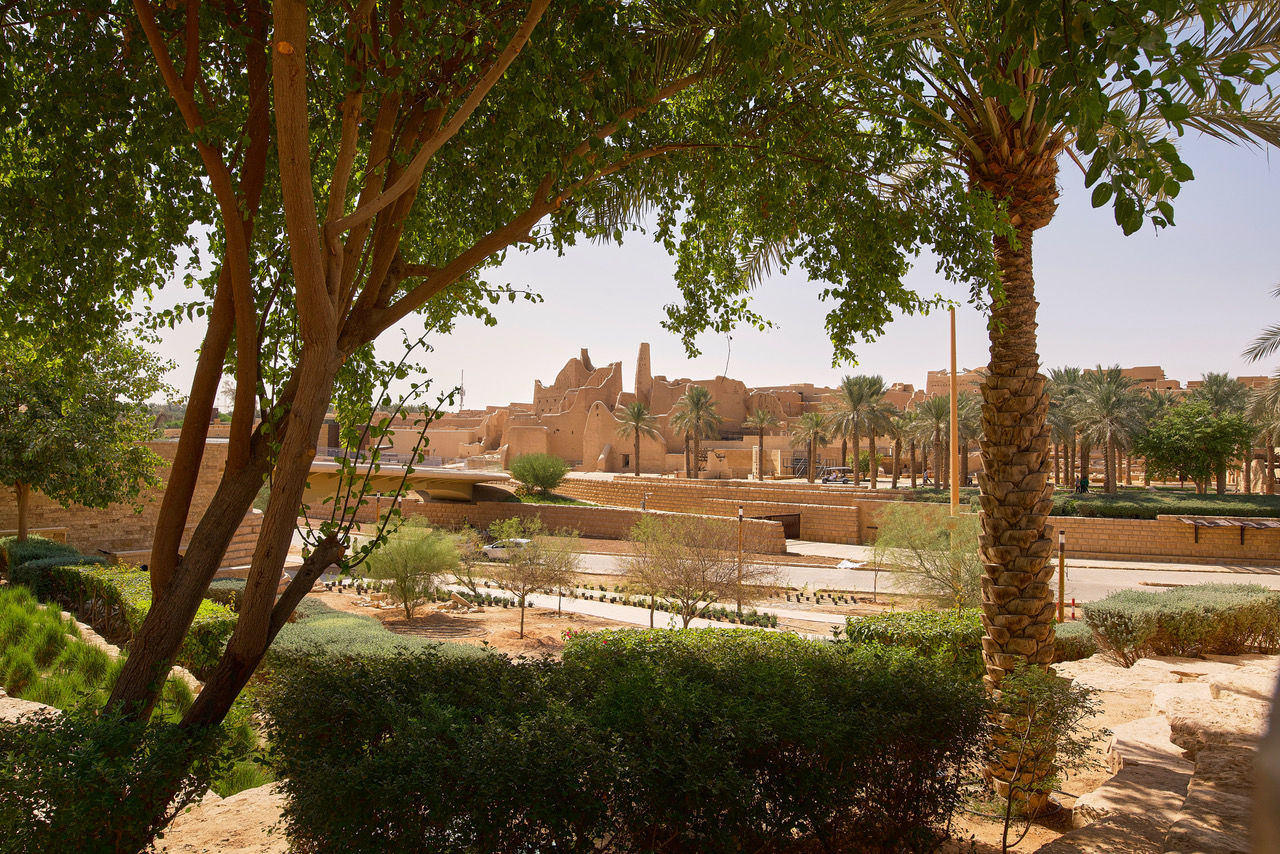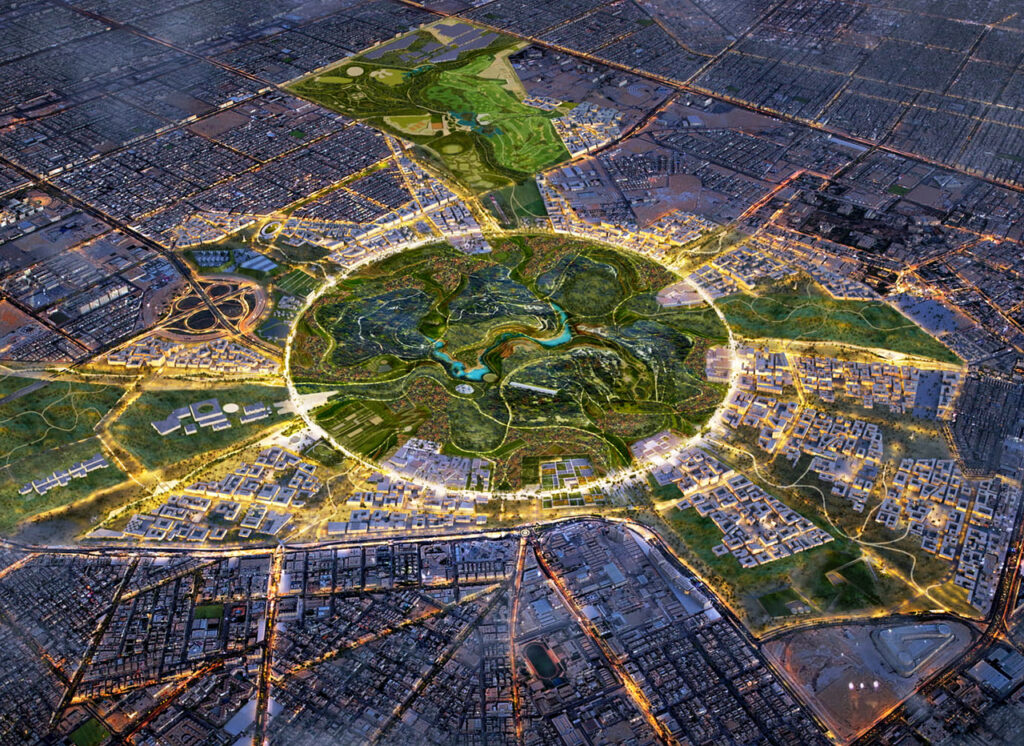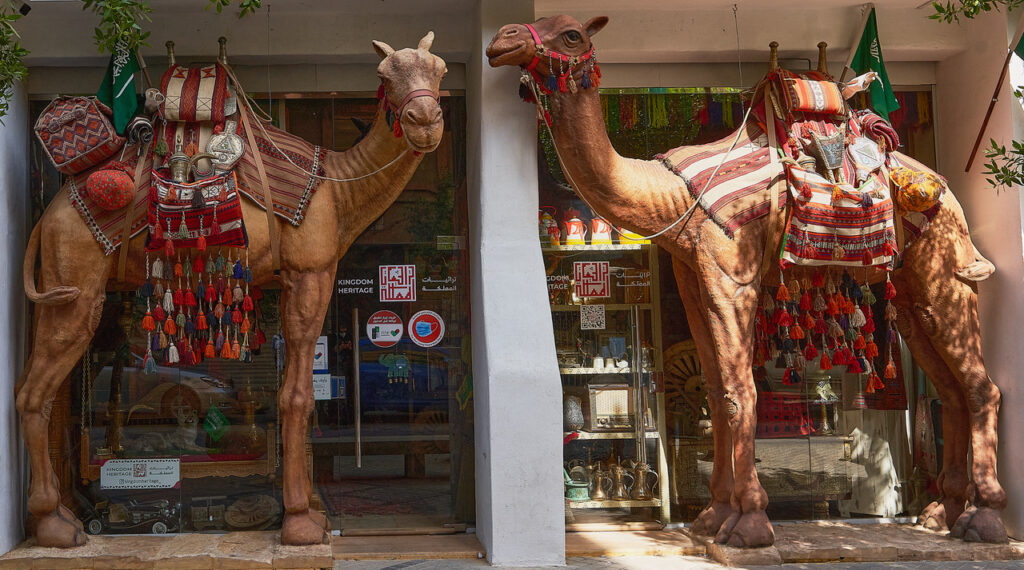The Crown Jewel of Saudi Society – Made of Clay
Today’s Saudi Arabia and today’s Riyadh are hardly conceivable without their common birthplace, Ad Diriyah (not to be confused with the district of Al Deerah!). This settlement and the dynasty of the Sauds, the Saudi royal family, are inextricably intertwined. Thus, Ad-Diriyah is like a crown jewel of Saudi society – made of clay.
The historical heritage associated with it is increasingly understood as unifying Saudi society and the royal family, giving the Saudi state its identity-creating foundation and legitimacy. And so it is not surprising that this site, which in the meantime has been destroyed by war and has fallen into disrepair, has been undergoing an immense effort to restore its ground plan for more than a decade. By the end of 2022, Ad Diriyah was ready to be visited by tourists. The remaining ruins of the historic settlement are located on the northwestern outskirts of the Saudi capital, about 10 km from Kingdom Tower. It has been a UNESCO World Heritage Site since 2010.

So what is this place all about?
Initially, the development of the settlement was rather mundane: as in other societies, the growth of communities on the Arabian Peninsula depended on the availability of sufficient groundwater and wells. In Ad Diriyah, the wells in Wadi Hanifah contributed to the growth of the settlement and the flourishing of agricultural life. Moreover, the settlement was located in the center of the Arabian Peninsula. Ad Diriyah thus became one of the most important trading settlements and became an important place for trade convoys passing through the area.
The place became identity-forming for the present kingdom about three hundred years ago, in 1727, when the first Saudi state was founded there. Somewhat later, At-Turaif, founded in 1750 and located in the southern part of Ad-Diriyah, became the capital of the Saudi dynasty. The historic settlement was home and seat of government of the third Imam of Diriyah, Saud Al-Kabir (or Saud the Great). The town was the original seat of the Saudi royal family and served as the capital of the Emirate of Diriyah under the first Saudi dynasty from 1744 to 1818. In 1818, the city was conquered by the Ottomans after a long siege. After 1818, the royal quarter of At-Turaif, which lay behind the remains of its shattered walls, was never reoccupied, although the area, including the ruins of Diriyah and At-Turaif, was recaptured in 1823 by Imam Turki bin Abdullah Al-Saud, who, however, made the nearby intact city of Riyadh the capital of the second Saudi state.
The restored historical site of At-Turaif is thus not only intended to help preserve the national heritage, but also increasingly serves the narrative that the House of Saud created the state and stability for its inhabitants over a period that now spans nearly three centuries.
The site is not only of historical significance, but also an example of an adobe village with a unique architectural style. The history and scenery of Diriyah are sure to attract many visitors; this sight is a must-see.
The ruins of At-Turaif rise from the oasis landscape on a flat hill. They are now restored to include the central mud walls of the district where the palaces of the Saudi rulers of the 18th century were located.

In At-Turaif district there are about 13 historical palaces and monuments, including: Salwa Palace, Saad bin Saud Palace, Guest House and At-Turaif Bath House, and Imam Mohammad bin Saud Mosque. The restored sites are still imposing. The palace is located in the center with about 10,000 m2 and offers a beautiful view of Wadi Hanīfah. Several buildings and the city wall have been restored.
Town of Ad Diriyah
The historical site of Ad Diriyah / At Turaif is not to be confused with the neighbouring town of Ad-Diriyah.
The (newer) town of Ad-Diriyah is now the seat of Diriyah governorate. The city of Ad Diriyah is also currently (October 2022) still a large construction site. But in a few years it will be a cultural center with nine museums planned. Probably the most important will be the Museum of the History of the House of Saud, planned by the Norman Foster & Associates architectural team. Other museums on the history of the Arabian Peninsula, calligraphy, Arabic music and falconry are to be added. Tourists will be able to choose from 38 hotels.
Diriyah Gate
Also not to be confused:
Adjacent to the historic site of Ad Diriyah, the Diriyah Gate project aims to transform a part of the town into one of Saudi Arabia’s most important urban destinations, interpreting the traditional lifestyle and bringing it into the modern era, just 15 minutes from downtown Riyadh. This new urban project is adjacent to the historic settlement of Ad-Diriyah.
The first phase is expected to be completed in 2024/2025.
Bujairi Terrace
The recently opened (December 2022) Bujairi Terrace is in close proximity to Ad Diriyah (see chapter Food & Drink). It reflects the typical Najd style, overlooks historic Ad Diriyah, and houses over 20 new restaurants and cafes in an area of about 15,000 m2, expressing a luxurious lifestyle.

